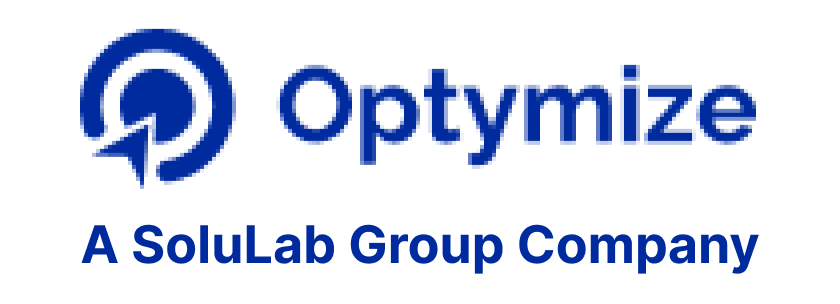React Native Interview Questions

Outline
This comprehensive guide has three sets of important React Native questions and answers: Beginners, Intermediate and Advanced.
Read, learn, practice and prepare yourself with these sure-shot React Native interview questions to crack your next interview for a React Native developer job.
Introduction - React Native Interview Questions and Answers
We have compiled the top React Native interview questions and answers for you to prepare for your next interview. We have divided the questions into three categories based on experience.
- React Native Interview Questions for Beginners
- Intermediate React Native Interview Questions
- Advanced React Native Interview Questions
Now, let;s discuss – Why React Native is one of the top frameworks? Why is there high demand for React Native developers? What makes React Native development a competitive job?
React Native has emerged as the most well-known name for creating complicated hybrid apps that offer a natural user experience.
React Native has the 6th spot in the ranking of top 10 framework for developing, according to a 2021 Stack Overflow Developer Survey.
Amazing performance, rich user interface, rapid application development, simple and easy maintenance are the greatest benefits that React Native framework offers.
The above statistics prove that React Native is indeed one of the most sought-after frameworks.
Now, let’s learn top interview questions on React Native. Let’s start.
React Native Interview Questions for Beginners
1. State the difference between React Native and ReactJS.
React Native
- It is used for developing mobile applications
- It has a built-in navigator library for navigating mobile applications.
- It does not use HTML tags.
- It provides low security in comparison to ReactJS.
- In this, Native uses its API to render code for mobile applications.
ReactJS
- It is used for developing web applications. .
- It uses React-router for navigating web pages.
- It uses HTML tags.
- It provides high security.
In this, the virtual DOM renders the browser code.
2. Explain different threads in React Native.
MAIN/UI Thread — This is the main application thread on which your Android/iOS app is running. The UI of the application can be changed by the Main thread and it has access to it .
Shadow Thread — layout created using React library in React Native can be calculated by this and it is a background thread.
JavaScript Thread — The main Javascript code is executed by this thread
3. What is Flexbox?
It is a layout model that allows elements to align and distribute space within a container. With Flexbox, when using flexible widths and heights, all the inside the main container can be aligned to fill a space or distribute space between elements, which makes it a great tool to use for responsive design systems.
4. What is Redux in React Native?
Redux is a predictable state container for JavaScript apps. It helps write applications that run in different environments. This means the entire data flow of the app is handled within a single container while persisting in the previous state.
5. Define Timers in React Native Application ?
Timers are an important and integral part of any application and React Native implements the browser timers.
6. Does React JS use HTML?
No, It uses JSX which is similar to HTML.
7. How to debug React Native Application?
In the React Native world, debugging may be done in different ways and with different tools, since React Native is composed of different environments (iOS and Android), which means there’s an assortment of problems and a variety of tools needed for debugging.
8. What is Props Drilling?
Props Drilling (Threading) is a concept that refers to the process you pass the data from the parent component to the exact child Component BUT in between, other components owning the props just to pass it down the chain.
9. What is a bridge and why is it used in React Native?
Bridge in ReactNative is a layer or simply a connection that is responsible for gluing
together Native and JavaScript environments.
Intermediate React Native Interview Questions
As a React Native developer, with experience you will be able to answer React Native interview questions for freshers with much ease. In this section we have collected some React Native tricky interview questions for you. This section will help you with the exact kind of Intermediate React Native Interview Questions that you may face in your job hunt.
1. How do you handle element size in React Native?
React native follows the box-model concept of CSS. The size of the element is calculated based on the size of content, padding, border, margin. The simplest way to set the size of an element is to set width and height CSS property for an element. All dimensions in React Native are unitless and represent density-independent pixels. By setting fixed height and width, the element will look exactly the same size on different screen sizes. But there is an instance where you want to give the width and height of an element in percentage.
Directly use of percentage is not supported in React native but React native does give a dimension module which can be used to give width in percentage. Dimension module gives the width and height of the mobile device. This information can be used to set the style of an element in runtime.
2. How is the CSS flexbox used to layout a React Native UI?
By default, the View component in React native has the display set to flex. Flex is a CSS property which is used to expand and shrink a component dynamically based on available space. If you set flex:1 then the component will take up all the available space. If a parent element is given flex:1 then all its child elements will evenly distribute available space among themselves. We can change the width of the child element by giving a higher value of flex property. The larger the flex given, the higher the ratio of space a component will take compared to its siblings.
A component can only expand to fill the available space if its parent has dimensions greater than 0. To make flex work, the parent element must have some width set to it then only flex property will evenly distribute available space. Otherwise, the element will consider width equal to zero and will not be visible on UI. Along with flex property, alignItems and justify-content CSS properties are also used to design mobile UI.
3. What is the difference between a functional component and a class-based component?
Though we can implement in both functional and class-based way, there are few fundamental differences between the two of them:
- Functional component can’t have stated ( before React hooks era ). It renders component only based on props passed. A class-based component can have a local state which can be helpful in building a bigger component
- Functional component access directly via props argument passed. In a class-based component, props are accessible via this.props.
- A class-based component is a more complex structure. It is an instance of a class derived from React. Component class. The class must implement a render() member function which returns a React component to be rendered
- The class-based component can also use lifecycle methods but functional component can’t use lifecycle methods.
- Functional components are a very light weighted component in comparison to class-based react component
4. What are the steps to avoid props drilling?
The following are the steps to avoid props drilling:
- React Context API
- Composition
- Render props
- HOC
- MobX or Redux
5. How does React Native differ from other mobile app development frameworks?
- Most other alternatives, such as ionic and Cordova run web apps. At the same time, React Native app runs a real mobile application and not a web app.
- It provides better performance than others as the React Native app gets converted into machine code running on mobile.
- React Native apps are relatively much closer to Native app development than the other Javascript frameworks.
- Mobile apps developed by React Native have a smaller bundle size.
6. What is meant by the state in the React component?
The state is another way of modifying a react component apart from the props function. Unlike props, the state value of React component changes in the component’s life cycle. The react component’s state value should not be changed directly. We should use the setState method of the React framework to change the state of a component.
7. Mention some of the best UI components in React Native.
Some of the best UI components in React Native are given below:
- Semantic UI
- Material UI
- React toolbox
- React bootstrap
- Ant design
8. What is virtual DOM?
Virtual DOM is real DOM’s representation. And it is a lightweight JavaScript object. This step comes in between calling the render function and displaying the elements on the screen. It is like a node tree that makes the list of elements, attributes, and content into objects and properties. A node tree of React components is created by the render function, and then it’s updated as per the changes in the data model.
Advanced React Native Interview Questions
This section contains some advanced interview questions on React Native. This section also explores a few React Native coding Interview questions. You may practice the common React Native programs which the interviewer often asks.
1. List the ways to write react components.
There are two ways to write a react component:
Class-based component
A simple function is used here that returns the JSX
Functional component
It uses the class keyword, which is introduced in ES6. The render lifecycle method that returns the JSX is used here.
2. What is the Gesture Responder System in React Native?
Gesture Responder System is React Native’s internal system, which manages the lifecycle of the system of gestures. Sliding, tapping, zooming, and swiping are some of the various kinds of gestures that React Native provides. These touch interactions are negotiated by the responder system. We use the Animated API generally. And we can’t reverse the gestures once made.
3. What is ListView and describe its use in React Native?
React Native ListView is a view component that contains the list of items and displays it in a vertically scrollable list.

3. How To Use Routing with React Navigation in React Native ?
One of the popular libraries for routing and navigation in a React Native application is React Navigation.
This library helps solve the problem of navigating between multiple screens and sharing data between them.

4. How are Hot Reloading and Live Reloading in React Native different?
- Live reloading reloads or refreshes the entire app when a file changes. For example, if you were four links deep into your navigation and saved a change, live reloading would restart the app and load the app back to the initial route.
- Hot reloading only refreshes the files that were changed without losing the state of the app. For example, if you were four links deep into your navigation and saved a change to some styling, the state would not change, but the new styles would appear on the page without having to navigate back to the page you are on because you would still be on the same page.
Conclusion
We hope these React Native interview questions and answers will be of great assistance to you throughout the process, whether you’re a developer getting ready for an interview or a hiring manager looking for the best applicant.
Remember that the hiring process involves more than just technical expertise. To ensure that you land a high paying React Native developer job, both previous experience and soft skills are crucial.
A lot of the React Native interview questions are open-ended, so keep that in mind. Interviewers are interested in your reasoning, not just the answer you memorised. Always be ready for follow-up questions regarding how you arrived at your answer. Describe your thought process.
Good luck with your upcoming React Native interview! You can go through our React Native developers jobs here.






